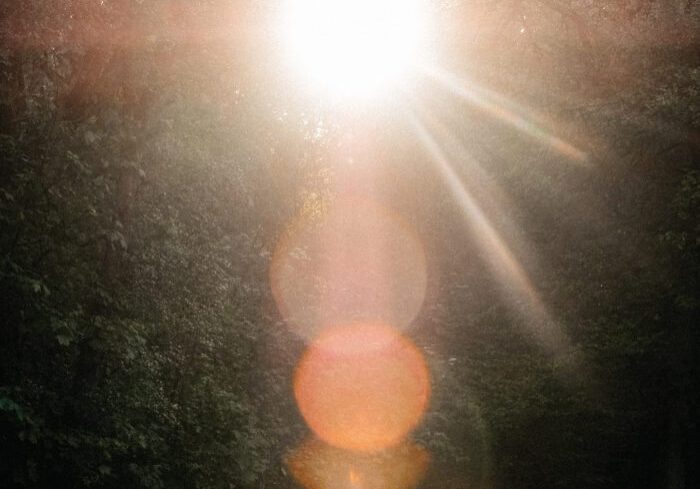What is a Closed System?
 Austrian biologist Ludwig von Bertalanffy was among the first in his guild to develop the concept of an “open system,” an idea that transcended the traditional methods of the physical sciences. He recognized that all living organisms are open systems in that they continually feed on the dynamic interplay of matter and energy from the environment in order to sustain life and thrive. He explains: “The organism is not a static system closed to the outside and always containing the identical components; it is an open system in a (quasi-) steady state […] in which material continually enters from, and leaves into, the outside environment.”[1] Far from equilibrium, open systems maintain themselves in a lively and unbounded state principally characterized by ongoing flow and change.
Austrian biologist Ludwig von Bertalanffy was among the first in his guild to develop the concept of an “open system,” an idea that transcended the traditional methods of the physical sciences. He recognized that all living organisms are open systems in that they continually feed on the dynamic interplay of matter and energy from the environment in order to sustain life and thrive. He explains: “The organism is not a static system closed to the outside and always containing the identical components; it is an open system in a (quasi-) steady state […] in which material continually enters from, and leaves into, the outside environment.”[1] Far from equilibrium, open systems maintain themselves in a lively and unbounded state principally characterized by ongoing flow and change.
Unlike open systems whose essential properties and organization depend on the constant interaction with the external environment, a closed system prides itself on stability and permanence. It chooses to function (and it believes itself to function optimally) without any interference from the vagaries and vicissitudes that arise outside of its delimited, mechanistic frame. In her scintillating book, Making All Things New: Catholicity, Cosmology, Consciousness, Ilia Delio offers a helpful and experiential example of a closed system from her time spent in a discalced Carmelite Monastery. Having entered the monastery with three other women, she recounts their introduction to traditional religious life (1984):
From the moment we crossed the threshold, our independent lives became dependent on the prioress or superior of the community. We were given clothes to wear, told where to sleep, where to eat, how to pray, and to do all these things under obedience in a routinized way. Our tasks were assigned to us each morning, and we were to do no other than the task we were given that day. Any infraction of disobedience could encounter public reprimand. Our communal discussions were limited to the weather, the monastery pets, the bakery, and the vegetable garden. We had no contact with the outside world, except a visit to the doctor or dentist. Visitors to the monastery were met by the portress and/or the prioress. The rest of the community was sealed off from the world and under the supreme command of the superior.[2]
Given the insights of modern science, we now realize that any system (including religious communities) that wishes to stay alive must operate openly and freely within the dynamic interrelatedness of the environment. They must welcome, in other words, the organic transfer of energies that lead to growth, creativity, novelty, transformation, and deeper wholeness. These systems are at home in a world of evolution and instability, and they find comfort and hope in being reborn into higher and richer forms of life.
Notes
[1] Ludwig von Bertalanffy, General Systems Theory (New York: Braziller, 1968), 121.
[2] Ilia Delio, Making All Things New: Catholicity, Cosmology, Consciousness (New York: Orbis Books, 2015), 119.
Image credit: Photo by Oleg Chursin on Unsplash
 View print-friendly version
View print-friendly version
3 Comments
Related Posts

A Whiteheadian Response: The God of Persuasion
Question: “Please help me to further understand, I thought that God did not direct our lives. We made choices, those choices CREATED—God’s presence is in the creation of the choice…


I am wondering… are there truly any closed systems? Perhaps in a highly controlled lab or test tube but even there the outside world enters. Loss of electricity, loss of external funding, loss of personnel, human error and more will all impact the “closed system”.
My emerging belief is that the ” closed” in “closed system” is a limitation in our seeing and recognizing. An outcome of the illusion that ” we are in control”.
If the One, the Divine Presence is truly “Love in action”, attracts through love and relationship, is there TRULY any “closed system”?
Thank you
Divinity is sovereign, the author and creator of all things, which by definition must include darkness — literal, intellectual and spiritual. Out of the womb of that darkness light emerges, whether in the creation story of Genesis 1b, birthing itself, seed germination, or the re-creation story of Jesus, “a light to those who sit in darkness and the shadow of death” (Lk. 1:79). Genesis 1b sets the pattern for generativity everywhere. So in the life of Ilia, the mystics, saints and all converted and sanctified souls — deliverance from some form (womb/tomb) of darkness into life and light. Every tomb is a womb and conversely in the paschal choreography, and every death a birth of sorts. Simply put, the entire process of divinization involves the transformation of various forms of interior darkness into interior light, or interior death/blindness into inner light/sight. Rembrandt’s paintings depict same, characters and objects appearing as light out of darkness, a technique known as “chiaroscuro.” When Thomas Merton was allowed to leave the confining and restrictive (dark and closed) walls and grounds of the monastery, notes Richard Rohr, his writing changed forever. All of life and creativity is born and emerges from shadow and darkness in cycles of darkness and light, like the very phases of the moon. The pure of heart see God as light, and all of creation in and as light.
There are no closed systems in nature, only in human nature, created by unredeemed minds. Because the corruption of the best is the worst, the proper study of systems that go awry, particularly religious systems, must begin with studying the psychopathology of the religious mind and its errant dynamisms, in contrast to the healthy spiritual mind. There are certain personality types with a bent toward outer authority, the repressive, the austere and the hyper-scrupulous that are drawn to such toxic systems like moths to a flame. If u want to know peace, u must first know war; likewise, if u want to know light u must first know darkness, each polarity being the sleeping but active partner of the other.